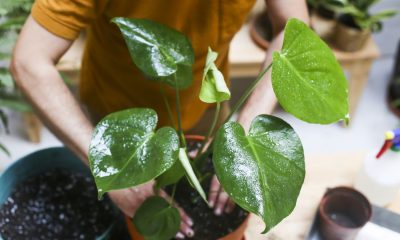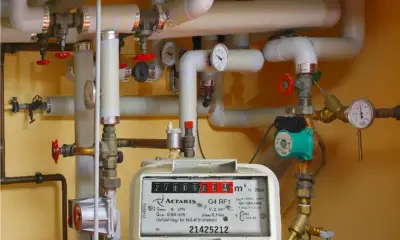Guides
Mastering Monstera Potting: Complete Guide

Introduction
Potting a Monstera plant correctly is the foundation of its health, growth, and longevity. These tropical plants are known for their striking leaves and unique aesthetic, but they can only thrive when given the proper environment, soil, and care. Potting is not just about transferring the plant to a bigger container; it involves understanding the plant’s root structure, drainage needs, soil composition, and optimal conditions for growth. Whether you are repotting an overgrown Monstera or planting a young one for the first time, mastering the potting process ensures your plant develops strong roots, vibrant foliage, and long-term vitality.
This article offers a detailed, step-by-step guide to potting Monsteras, covering everything from choosing the right pot and soil mix to watering techniques, post-potting care, and troubleshooting common problems. By following these guidelines, your Monstera will flourish and remain a stunning addition to your home.
Understanding Monstera’s Needs
1. Choosing the Right Pot
The first step in potting a Monstera is selecting an appropriate container. A pot should be slightly larger than the plant’s current one, providing enough room for root growth without retaining excessive moisture. Monsteras are prone to root rot if their soil stays soggy, so always choose a pot with adequate drainage holes. The material of the pot also matters: terracotta pots are excellent for air circulation, while plastic pots retain moisture longer, which can be useful in drier environments.
2. Preparing the Soil Mix
Monsteras prefer well-draining soil that retains moderate moisture. A mix of potting soil, perlite, and orchid bark works well, providing aeration and mimicking their natural tropical habitat. Avoid heavy, clay-based soils, as they can retain too much water, suffocating roots. The right soil mix ensures your Monstera’s roots get enough oxygen while staying hydrated.
3. Watering Before Potting
Watering your Monstera a day or two before repotting reduces transplant shock. Moist soil holds its shape better during the transfer and protects delicate roots from breaking.
Step-by-Step Potting Guide
Step 1: Select the Right Time
Repot your Monstera during its growing season—spring or early summer. During this time, the plant is actively developing roots and foliage, which helps it recover quickly from the stress of repotting. Avoid repotting during the winter or dormant months, as the plant’s growth slows, making it more vulnerable.
Step 2: Prepare the New Pot
Start by placing a layer of your prepared soil mix at the bottom of the new pot. This provides a supportive base for the roots and ensures good drainage. If the pot is deep, consider adding a small layer of pebbles at the very bottom to enhance drainage further.
Step 3: Remove the Monstera from Its Current Pot
Gently slide the plant out of its existing container. If the roots are densely packed, carefully loosen them with your fingers, avoiding excessive damage. Inspect the roots for any signs of rot or disease, and trim away unhealthy sections. Healthy roots are firm and white, while brown or mushy roots indicate problems that need attention.
Step 4: Position the Plant in the New Pot
Place your Monstera in the center of the new pot, ensuring it sits at the same soil depth as before. Fill around the roots with your soil mix, pressing lightly to remove air pockets. Avoid compacting the soil too much, as roots need space to breathe and expand.
Step 5: Water Thoroughly
Water the plant immediately after potting to help settle the soil around the roots. Make sure excess water drains freely to prevent waterlogging, which can lead to root rot.
Step 6: Provide Proper Lighting
After potting, place your Monstera in bright, indirect light. Direct sunlight can scorch its leaves, while too little light slows growth. A spot near a north- or east-facing window usually works best.
Post-Potting Care
1. Monitor Watering
Let the top inch of soil dry out before watering again. Overwatering is a common mistake and can harm your Monstera. Stick to a consistent watering schedule and adjust based on the plant’s environment and season.
2. Provide Humidity
Monsteras thrive in humid conditions, similar to their native tropical habitats. Increase humidity by using a humidifier, placing the pot on a tray filled with water and pebbles, or grouping it with other plants. Regular misting also helps, but avoid leaving leaves wet for long periods to prevent fungal issues.
3. Fertilize Regularly
During the growing season, feed your Monstera every 4-6 weeks with a balanced, water-soluble fertilizer. This promotes strong leaf development and healthy growth. Avoid fertilizing during dormancy, as the plant will not utilize the nutrients efficiently.
Troubleshooting Common Issues
Yellowing Leaves
Yellow leaves often indicate overwatering, poor drainage, or nutrient deficiencies. Check the soil’s moisture and drainage and adjust watering habits. Fertilizing appropriately can also restore leaf color.
Wilting
Wilting can result from underwatering or root rot. Examine the soil and roots to identify the issue. If roots are healthy and the soil is dry, increase watering. If roots are damaged or mushy, trim affected parts and repot with fresh soil.
Stunted Growth
Slowed growth may indicate that the Monstera is root-bound or lacks nutrients. Repotting into a slightly larger pot and fertilizing can rejuvenate the plant. Ensure it receives adequate light and humidity.
Read More: Why You See “You Have Been Blocked Originating Messages
Conclusion
Potting a Monstera is a critical step for ensuring its long-term health and vibrancy. By choosing the right pot, preparing a well-draining soil mix, and carefully following potting procedures, you can create an ideal environment for your plant to thrive. Post-poting care, including proper watering, providing humidity, and regular fertilization, further supports robust growth and beautiful foliage. Monitoring for common issues such as yellowing leaves, wilting, or stunted growth allows you to address problems early and maintain a healthy plant. A well-potted Monstera not only enhances the aesthetic of your home but also contributes to better air quality and a sense of tranquility.
With consistent care and attention to detail, your Monstera can grow into a stunning tropical centerpiece, reflecting your dedication and knowledge as a plant caretaker. Proper potting is the first step in a rewarding journey of nurturing one of the most popular houseplants worldwide.
FAQs
1. How often should I repot my Monstera?
Repot your Monstera every 1-2 years, depending on its growth. Signs it needs repotting include roots coming out of drainage holes or the plant becoming top-heavy.
2. Can I use regular potting soil for my Monstera?
Standard potting soil can work, but it’s best to mix it with perlite and orchid bark to improve drainage and mimic its natural environment.
3. Should I trim the aerial roots of my Monstera?
Trimming aerial roots is optional. They help the plant absorb moisture and nutrients from the air but can be trimmed for aesthetic reasons.
4. How can I increase humidity for my Monstera?
Use a humidifier, a water and pebble tray, mist the leaves occasionally, or group it with other humidity-loving plants to boost humidity levels.
5. What should I do if my Monstera’s leaves are turning brown?
Brown leaves are usually caused by underwatering, low humidity, or direct sunlight exposure. Adjust watering habits, increase humidity, and move the plant to a location with indirect light.
-

 Gadgets2 years ago
Gadgets2 years agoDoes Nest Thermostats Contain Cameras Or Microphones? Is It Safe For you?
-

 Guides1 year ago
Guides1 year ago10 Best Apps To Control All Your Smart Home Devices.
-

 Gadgets2 years ago
Gadgets2 years agoWhat Is The Purpose Of Red Button On The SimpliSafe Keypad?
-

 Gadgets2 years ago
Gadgets2 years agoComplete Guide About Equalizer settings for Samsung-Soundbar
-

 Accessories2 years ago
Accessories2 years agoBlink Camera’s Temperature Sensor Settings, and More
-

 Solutions3 years ago
Solutions3 years agoWhy is My Samsung TV Picture So Dark? Exploring the Possible Causes
-

 Gadgets3 years ago
Gadgets3 years agoFitbit Symbols Meaning: What Do The Fitbit Icons Mean?
-

 Accessories2 years ago
Accessories2 years agoCan Siri Control Samsung Televisions And Are Samsung TVs Homekit Compliant?























































































































